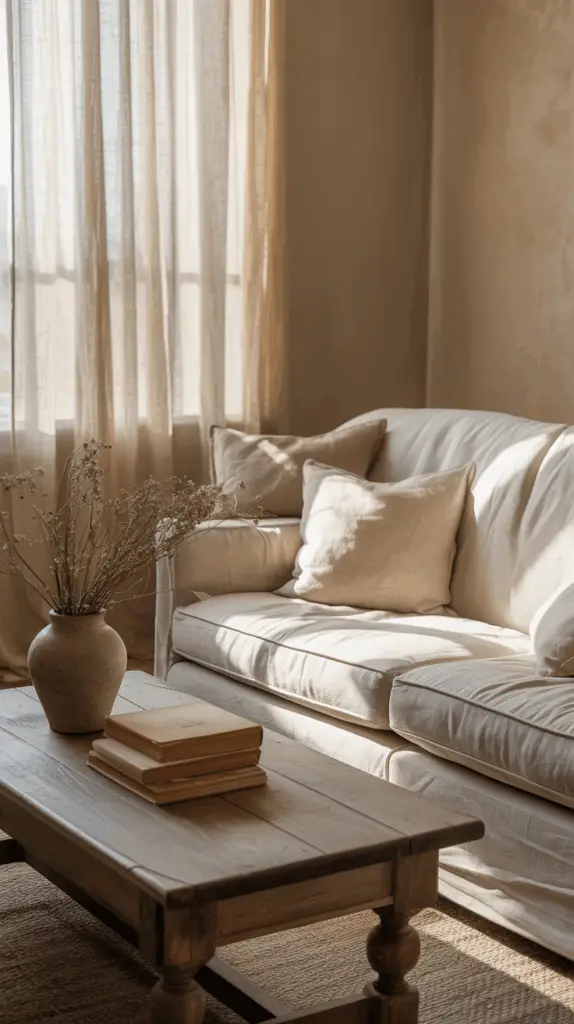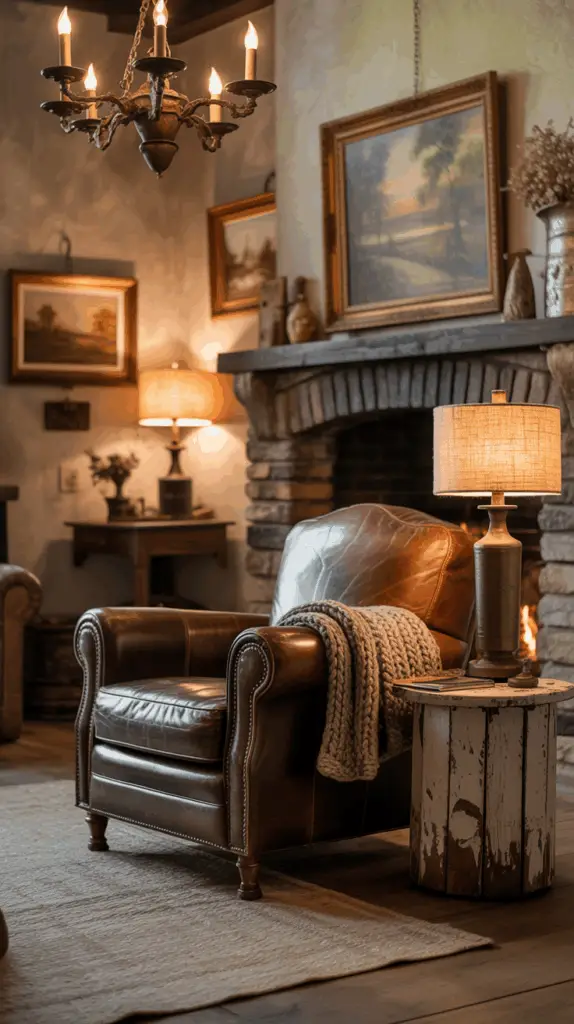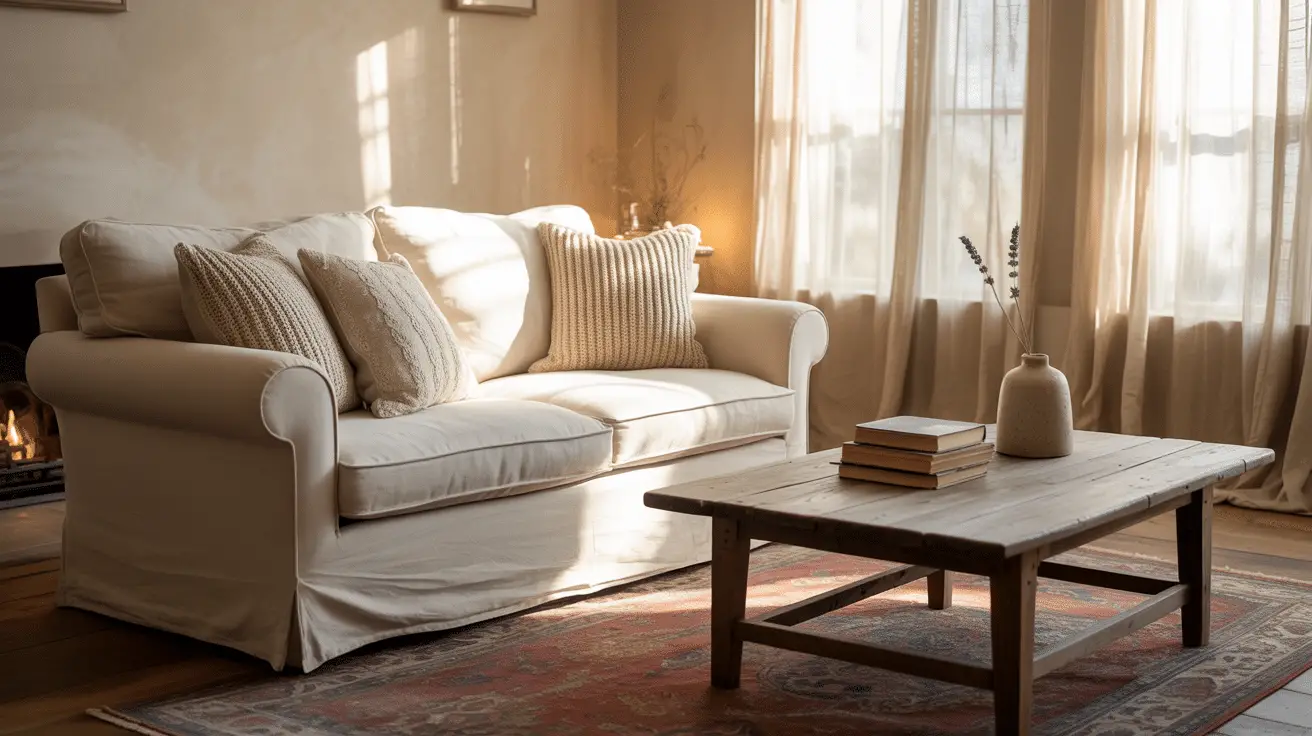How to Get a Rustic Farmhouse Living Room for Timeless Elegance and Cozy Charm
Table of Contents
The Art of Rustic Elegance: Designing Your Perfect Farmhouse Living Room
There’s something deeply comforting about the rustic farmhouse aesthetic. It evokes simpler times, cozy evenings by the fire, and spaces that feel effortlessly lived-in. In fact, according to a 2023 interior trends report by Houzz, farmhouse-style living rooms continue to be among the top five most pinned and saved living room styles across the U.S.—proving its lasting appeal.
But what makes a rustic farmhouse living room truly timeless? It’s more than just weathered wood and vintage accents. It’s about blending raw textures with refined touches, combining antique charm with modern functionality, and creating a space that feels warm, authentic, and inviting every day of the year.
In this guide, we’ll walk through everything you need to design a rustic farmhouse living room that balances comfort with elegance. From furniture and color palettes to architectural details and styling tips, this is your roadmap to mastering a timeless look that never feels forced or trendy. Whether you’re starting from scratch or looking to update an existing room, this article will help you achieve a space that exudes cozy sophistication.
Start with a Neutral, Earthy Color Palette
A rustic farmhouse living room begins with a grounded, nature-inspired color scheme. Think of muted tones pulled from the outdoors—creamy whites, soft grays, warm taupes, and sandy beiges all form a versatile base for layering rustic textures and vintage décor.
These tones don’t just look beautiful—they serve a practical purpose, too. They reflect natural light, make your space feel larger and more open, and act as a calming backdrop for more visually complex elements like reclaimed wood, wrought iron, or antique furniture.
Accent colors such as sage green, dusty blue, and terracotta bring subtle character without overwhelming the room. These hues work well on soft furnishings like pillows, throws, or even painted accent furniture.
Color Palette Ideas for Rustic Farmhouse Living Rooms
| Color Category | Suggested Shades | Best Used On |
| Base Tones | Cream, Linen, Warm White | Walls, Ceilings, Large Furniture |
| Accents | Sage, Slate Blue, Clay Red | Throw Pillows, Vases, Rugs |
| Warm Neutrals | Greige, Soft Mocha, Sandstone | Curtains, Upholstery, Painted Trims |

Incorporate Natural Materials and Textures
The texture is what gives rustic farmhouse spaces their richness. It brings dimension to the simplicity of the style, adding a tactile layer that engages the senses. Wood is the foundation here—reclaimed beams, distressed oak floors, shiplap walls, or barn-style sliding doors all reinforce the farmhouse identity.
But balance is key. Pair rough wood finishes with soft, cozy materials like cotton, wool, and linen. A chunky knit throw over a leather armchair or a linen slipcover on a structured couch offers that juxtaposition of rugged and refined.
Stone is another strong contender—whether as a fireplace surround or subtle accents like slate coasters or soapstone décor. Iron and metal also have their place, particularly in light fixtures, curtain rods, and antique-style hardware.
Texture and Material Pairing Guide
| Material | Rustic Use Case | Textural Impact |
| Reclaimed Wood | Floors, Beams, Coffee Tables | Natural, Warm, Organic |
| Linen | Sofas, Curtains, Cushions | Light, Airy, Understated |
| Iron/Steel | Lighting, Hardware, Brackets | Industrial, Contrast, Visual Weight |
| Stone | Fireplace Surround, Side Tables | Cool, Solid, Architectural |
Select Furniture with History and Heart
In a rustic farmhouse living room, the furniture should feel as though it has a story. That doesn’t necessarily mean every piece has to be antique, but there should be an intentional nod to age, craftsmanship, and utility.
Opt for pieces that are sturdy, comfortable, and timeless in shape. A slipcovered sofa in a neutral hue, a vintage coffee table with visible grain and imperfections, or a distressed sideboard that doubles as a media console—these items give the room depth and soul.
Mixing is encouraged. Don’t be afraid to pair a classic tufted armchair with a simple spindle-back bench or layer in a rattan accent piece for added texture. The beauty lies in contrast and cohesion, not uniformity.
Rustic Farmhouse Furniture Guide
| Furniture Piece | Style Recommendation | Why It Works |
| Sofa | Slipcovered, Neutral, Deep-Seated | Comfortable, clean lines, timeless |
| Coffee Table | Reclaimed or Weathered Wood | Natural texture, visual interest |
| Accent Chairs | Leather, Woven, or Tufted | Adds warmth and personality |
| Storage Consoles | Vintage or Painted Wood | Utility meets character |
Use Lighting to Create Warm, Inviting Layers
Lighting plays a critical role in establishing the cozy yet elegant tone of a rustic farmhouse living room. A mix of ambient, task, and accent lighting helps create mood and functionality.
Start with a statement fixture—an iron chandelier, a wood-beaded pendant, or a lantern-inspired ceiling light. These anchor the space and set the rustic tone immediately.
Layer in floor lamps and table lamps with linen or burlap shades for soft, diffused lighting. Wall sconces, especially in distressed metal or matte black, can be used for added warmth and charm around reading nooks or shelving.
Avoid overly modern fixtures that clash with the aesthetic. Instead, choose lighting that complements the earthy palette and natural textures of the space.
Layered Lighting Plan for Rustic Living Rooms
| Lighting Type | Fixture Example | Placement Tip |
| Ambient Lighting | Iron chandelier, wood bead pendant | Center of the room |
| Task Lighting | Linen-shaded table lamps, swing-arm lamps | Near sofas, reading corners |
| Accent Lighting | Candle sconces, under-shelf lighting | Around fireplace, shelves, wall art |

Add Character with Vintage Décor and Antiques
Accessories and decorative accents are where your rustic farmhouse personality can truly shine. Think of décor as curated memories—things collected over time that make the space feel layered and lived-in.
Old books, ceramic pitchers, antique mirrors, woven baskets, and vintage clocks are excellent choices. Display them intentionally on open shelves, consoles, or coffee tables, mixing heights and textures for interest.
Wall décor should feel classic and unforced. Consider botanical prints, farmhouse signs with soft typography, or black-and-white photography. Old window frames or reclaimed wood panels also work as unique wall art.
Vintage Farmhouse Décor Elements
| Décor Item | Ideal Placement | Design Impact |
| Woven Baskets | Under console, beside sofa | Storage + rustic charm |
| Antique Mirrors | Above mantels, opposite windows | Reflects light, adds elegance |
| Stoneware & Pitchers | Coffee tables, shelves, mantels | Organic shape and authenticity |
| Farmhouse Art | Walls, entryways | Sets tone, supports theme |
Create a Cozy Layout Focused on Comfort and Conversation
A rustic farmhouse living room should invite people to linger. The layout must encourage conversation, comfort, and a natural flow. Think informal yet intentional.
Arrange seating in a way that encourages face-to-face interaction—a U-shaped or L-shaped configuration works beautifully. Place the sofa opposite the fireplace (if you have one), with accent chairs on either side to frame the space.
Don’t over-clutter. Leave room for movement while still making the space feel full and anchored. Use rugs to zone the room, especially if it’s open concept. A jute or wool rug in natural tones works well under seating areas.
Coffee tables and side tables should be within easy reach, and your layout should feel grounded, welcoming, and warm.
Living Room Layout Blueprint
| Area of Focus | Arrangement Tips | Resulting Effect |
| Sofa Positioning | Face fireplace or focal wall | Creates symmetry and balance |
| Chair Placement | Flank sofa or angle inward | Encourages conversation |
| Rug Size | Large enough to fit all main furniture | Grounds space, adds texture |
| Flow and Walkways | Leave 2–3 ft between furniture pieces | Feels open yet cozy |
Conclusion: A Living Room with Soul and Style
Designing a rustic farmhouse living room isn’t about following rigid rules—it’s about capturing a feeling. The warmth of weathered wood, the simplicity of natural tones, the comfort of aged furniture, and the quiet presence of thoughtful detail all come together to create a space that’s both stylish and soulful.
By combining old and new, rough and soft, earthy and refined, you create a room that feels timeless—not tied to trends but rooted in personality. Whether you’re starting fresh or layering into an existing layout, your farmhouse living room can become a peaceful, elegant haven filled with charm and authenticity.

